Did you know that a single potato can produce up to 20 sprouted potatoes? It’s true! Each of those sprouts, also known as eyes, has the potential to grow into a new potato plant. This surprising fact highlights the incredible vitality and growth potential hidden within each humble potato.
Key Takeaways:
- Planting potato eyes from sprouted potatoes can lead to the growth of new potato plants.
- Removing potato eyes from existing potatoes can help prevent overcrowding and promote healthier growth.
- Choosing potatoes with good eyes is essential for successful potato cultivation.
- Harvesting potatoes with eyes can provide a continuous supply of seed potatoes for future planting.
- Preventing potato eye diseases is crucial to ensure the health and productivity of your potato plants.
The Origins of the Potato
The potato, a beloved and versatile vegetable, has a long and fascinating history. Its origins can be traced back to an extraordinary region in the highlands of the Andes Mountains, specifically southern Peru and the northwestern tip of Bolivia. It was in these rugged and remote areas that the cultivation of potatoes first began, dating back to between 8,000 and 5,000 B.C.
Ancient societies, such as the Inca Indians, recognized the tremendous value of potatoes and incorporated them into their daily lives. Potatoes were an essential staple in their diet, providing nourishment, sustenance, and sustenance for the Andean people. The Inca Indians understood the unique attributes of this tuber crop, cultivating a diverse range of potato varieties to suit their needs and environment.
This ancient cultivation laid the foundation for the beloved potato we know today. From its humble beginnings in Peru and Bolivia, the potato slowly spread across the world, eventually becoming a vital crop in countries across continents.
As we delve into the fascinating history of the potato, it is important to appreciate the enduring legacy of its ancient cultivation in the Andes Mountains. This region serves as a testament to the ingenuity and resourcefulness of early cultures, who recognized the value of the potato long before the rest of the world.
A visually stunning photo showcasing the breathtaking landscape of the Andes Mountains, where the origins of the potato can be traced to. This image captures the magnificent beauty of the region and reflects the rugged terrain that shaped the early cultivation practices of this remarkable vegetable.
The Potato’s Arrival in Europe: Resistance and Acceptance
When the potato arrived in Europe, it faced significant resistance and skepticism. Many Europeans believed that potatoes were poisonous and went against their religious beliefs. However, despite these initial obstacles, there were influential individuals who played crucial roles in popularizing the potato and overcoming the resistance.
One such figure was King Frederick II of Prussia, who recognized the potential of the potato as a solution to food scarcity. He ordered its cultivation and encouraged his subjects to grow and consume them. King Frederick II’s support helped dispel the misconceptions surrounding the potato and paved the way for its acceptance in Prussian society.
In France, Antoine-Augustin Parmentier played a vital role in promoting the potato. Parmentier, a French pharmacist, recognized the nutritional value and versatility of this tuber. Through various initiatives such as hosting potato feasts and distributing potato plants to the public, he successfully popularized the potato in France.
Even the influential figures of the time, such as Marie Antoinette and Louis XVI, recognized the value of the potato and attempted to promote its acceptance among the French population. Marie Antoinette was known to wear a headdress adorned with potato blossoms, while Louis XVI ordered the planting of potato fields at Versailles. However, despite their efforts, the French people remained skeptical for some time.
It was not until a severe famine struck France in the late 18th century that the French finally turned to the potato as a reliable food source. Recognizing its hardiness and ability to thrive in poor conditions, the potato became an essential staple, helping alleviate hunger and contributing to the country’s survival during times of crisis.
“The use of the potato is the only way of making famine impossible.” – Antoine-Augustin Parmentier
The resistance and eventual acceptance of the potato in Europe mark a significant turning point in its history. Thanks to the efforts of individuals like King Frederick II and Antoine-Augustin Parmentier, the potato overcame centuries of skepticism and became one of the most important and widely consumed crops in the Western world.
Influence of King Frederick II and Antoine-Augustin Parmentier:
King Frederick II of Prussia and Antoine-Augustin Parmentier played indispensable roles in popularizing the potato in Europe. Their efforts helped overcome resistance and paved the way for the widespread acceptance of this versatile tuber.
| Key Influencer | Country | Contributions |
|---|---|---|
| King Frederick II | Prussia | Ordered cultivation, encouraged consumption, and dispelled misconceptions |
| Antoine-Augustin Parmentier | France | Hosted potato feasts, distributed potato plants, and promoted its nutritional value |
Potatoes in North America
Potatoes have a rich and fascinating history, originating from the Andes Mountains in South America. They made their way to North America in the 1620s, but it wasn’t until the 19th century that they truly became a staple crop in the region.
North America embraced potatoes for their versatility, adaptability to different climates, and nutritional value. Potatoes quickly became an integral part of the North American diet, finding their way into various traditional dishes and culinary traditions.
Today, potatoes play a significant role in North American cuisine and agriculture. They are grown in abundance across the continent, with the United States being one of the largest potato producers in the world. Potatoes are used in a wide range of recipes, from comforting mashed potatoes and crispy french fries to hearty potato soups and casseroles.
“Potatoes have become a staple crop in North America, providing sustenance and nourishment to millions. Their adaptability and versatility make them a beloved ingredient in countless recipes.”
The Versatility of the Potato
One of the reasons for the potato’s popularity is its incredible versatility in the kitchen. Whether you’re boiling, mashing, baking, or frying, the potato can do it all. This versatility allows for endless culinary possibilities and the creation of a wide variety of delicious dishes.
Let’s explore some of the most popular ways to prepare potatoes:
- Boiling Potatoes: Boiled potatoes are a simple yet satisfying side dish. They can be enjoyed as is or used as a base for other recipes like potato salad or mashed potatoes.
- Mashed Potatoes: Creamy and buttery, mashed potatoes are a classic comfort food. They pair perfectly with roasted meats, gravy, or a simple pat of butter.
- Baked Potatoes: Baking potatoes in their skins results in a fluffy interior and a crispy, flavorful exterior. Serve them as a side dish or load them up with toppings like sour cream, chives, and cheese for a hearty meal.
- Fried Potatoes: Whether you prefer French fries, potato chips, or hash browns, fried potatoes are a beloved snack or accompaniment to any meal.
But the versatility of potatoes goes beyond the basic preparation methods. Potatoes are also the star ingredient in some of the world’s most famous dishes. Here are a few examples:
“Poutine” is a Canadian dish consisting of crispy French fries topped with cheese curds and smothered in rich gravy. It’s a beloved comfort food in Canada and gaining popularity worldwide.
“Stamppot” is a traditional Dutch dish made with mashed potatoes mixed with various vegetables like kale or sauerkraut. It’s hearty, delicious, and perfect for cold winter nights.
“Colcannon” is an Irish dish made with mashed potatoes and cabbage or kale. It’s often served on St. Patrick’s Day and pairs well with a pint of Guinness.
“Pierogies” are Polish dumplings filled with a mixture of potatoes and cheese, meat, or vegetables. These little pockets of goodness can be boiled, fried, or baked, and are enjoyed by people around the world.
The versatility of the potato knows no bounds, making it a staple in kitchens worldwide. Its ability to adapt to various cooking methods and complement a wide range of flavors has cemented its place in countless famous and beloved dishes.
Potato Longevity
Potatoes are not only a versatile ingredient in the kitchen but also have the potential for long-term storage. When stored correctly, potatoes can remain safe to eat for several months, ensuring you can enjoy this starchy vegetable long after it’s harvested.
To maximize the longevity of your potatoes, it’s important to follow proper storage guidelines. The ideal storage conditions for potatoes include a cool, dark room that is well-ventilated. This can be a pantry, a kitchen cupboard, or any area that meets these criteria. It’s crucial to keep the potatoes away from direct light, as exposure to light can cause them to turn green and develop a bitter taste.
By providing a cool environment, typically between 45°F and 50°F (7°C to 10°C), you can slow down the natural sprouting process and prevent premature spoilage. Additionally, the dark room helps maintain the potato’s quality by reducing the risk of greening and preserving their original flavor and texture.
Tips for Potato Storage:
- Choose high-quality, healthy potatoes for storage.
- Inspect the potatoes for any signs of damage or decay before storing them.
- Avoid washing the potatoes before storage to prevent moisture buildup.
- Place the potatoes in a well-ventilated container, such as a breathable bag or a wooden crate.
- Store the potatoes away from other fruits and vegetables, as they can release ethylene gas that accelerates spoilage.
- Check the stored potatoes regularly and remove any sprouted, soft, or spoiled ones to prevent the spread of decay.
Properly stored potatoes can last for several months, providing you with a convenient and readily available ingredient for a variety of dishes. Whether you’re baking, boiling, or frying, having well-preserved potatoes on hand allows you to enjoy their taste and nutritional benefits throughout the year.
| Potato Storage Tips | Benefits |
|---|---|
| Choose high-quality potatoes | Ensures better longevity and taste |
| Inspect for damage or decay | Prevents the spread of decay |
| Avoid washing before storage | Reduces moisture buildup |
| Use a well-ventilated container | Preserves freshness and quality |
| Store away from other produce | Prevents accelerated spoilage |
| Regularly check and remove spoiled potatoes | Maintains overall storage quality |
Remember to store your potatoes correctly, and they will reward you with their delicious flavors and culinary versatility long after harvest.
Potatoes as a Medical Cure
Historically, potatoes were believed to have healing powers and were used in various creative ways for medical treatments. The versatility of the potato extends beyond culinary applications, as it was also recognized for its potential medicinal benefits.
One interesting potato remedy involves using raw potato slices to combat colds and flu-like illnesses. People would place these slices in their socks overnight to alleviate symptoms and promote healing. Although this method may sound unconventional, it was believed to draw out toxins from the body and provide relief.
Furthermore, some individuals consider potato juice as a potential solution for chronic indigestion. It is believed that the natural properties of potatoes can help soothe the digestive system and alleviate discomfort associated with indigestion. However, it is important to note that these beliefs are based on anecdotal evidence and may not be supported by scientific research.
“Potatoes have been used for centuries as a natural remedy for various ailments. Their medicinal properties have intrigued many, and while some claims may seem far-fetched, there is a long-standing tradition of relying on potatoes for their potential healing powers.”
While these unconventional uses of potatoes may be intriguing, it is crucial to approach them with caution and consult a healthcare professional for any medical concerns. It is also essential to rely on evidence-based practices and proven treatments for optimal health and well-being.
| Medicinal Use | Benefits |
|---|---|
| Cold and flu relief | Alleged ability to draw out toxins and alleviate symptoms |
| Chronic indigestion | Believed to soothe the digestive system and provide relief from discomfort |
The Mystery of the Potato Chip
The origin of the potato chip is still a mystery, with various stories surrounding its invention. One of the most popular stories attributes the creation of the potato chip to chef George Crum in 1853. According to the tale, George Crum was an innovative chef at a resort in Saratoga Springs, New York. One day, a customer complained that Crum’s French fries were too thick, prompting him to slice the potatoes as thin as possible and fry them until crispy to “annoy” the customer. However, there is no definitive proof to support this story.
“The invention of potato chips is still wrapped in mystery and coated in controversy. While George Crum is often credited with the invention, there are others who lay claim to the crispy snack’s creation. Theories range from accidental creations to deliberate culinary experimentation. Nevertheless, the popularity of potato chips grew rapidly, and they became a beloved snack around the world.”
Despite the uncertainty, the invention of the potato chip marked a turning point in culinary history. This simple snack has become a favorite treat for people of all ages, with countless flavors and variations available today.
While the true origins of the potato chip may remain mysterious, one thing is certain: its invention has left a lasting impact on the snack industry, captivating taste buds around the world.
Conclusion
The journey of the potato from its origins in the Andes Mountains to tables around the world is a testament to its resilience, adaptability, and undeniable appeal. This humble tuber has conquered continents and diverse cultures, leaving an indelible mark on global cuisine. Its rich and diverse history spans thousands of years, making it a fascinating subject of study and admiration.
As the potato traveled from the Andes Mountains to Europe and North America, it faced resistance and skepticism. However, through the efforts of influential figures like King Frederick II of Prussia and Antoine-Augustin Parmentier in France, the potato eventually gained acceptance and became a staple crop. It is now an integral part of various regional dishes and a dietary mainstay for many.
One of the key factors behind the potato’s popularity is its versatility. Boiled, mashed, baked, or fried, the potato lends itself to endless culinary possibilities. Whether it’s a comforting bowl of mashed potatoes or a crisp and golden French fry, this versatile vegetable has become a beloved ingredient in dishes from around the world. Its longevity as a stored food source has also made it a reliable staple, ensuring access to sustenance even during challenging times.
From its origins in the Andes Mountains to its contribution to global cuisine, the potato’s journey is not just a story of sustenance but also a testament to the resilience and adaptability of nature. As we savor and appreciate the potato in all its forms, let us also remember and honor the cultures, communities, and historical moments that have shaped its remarkable history.

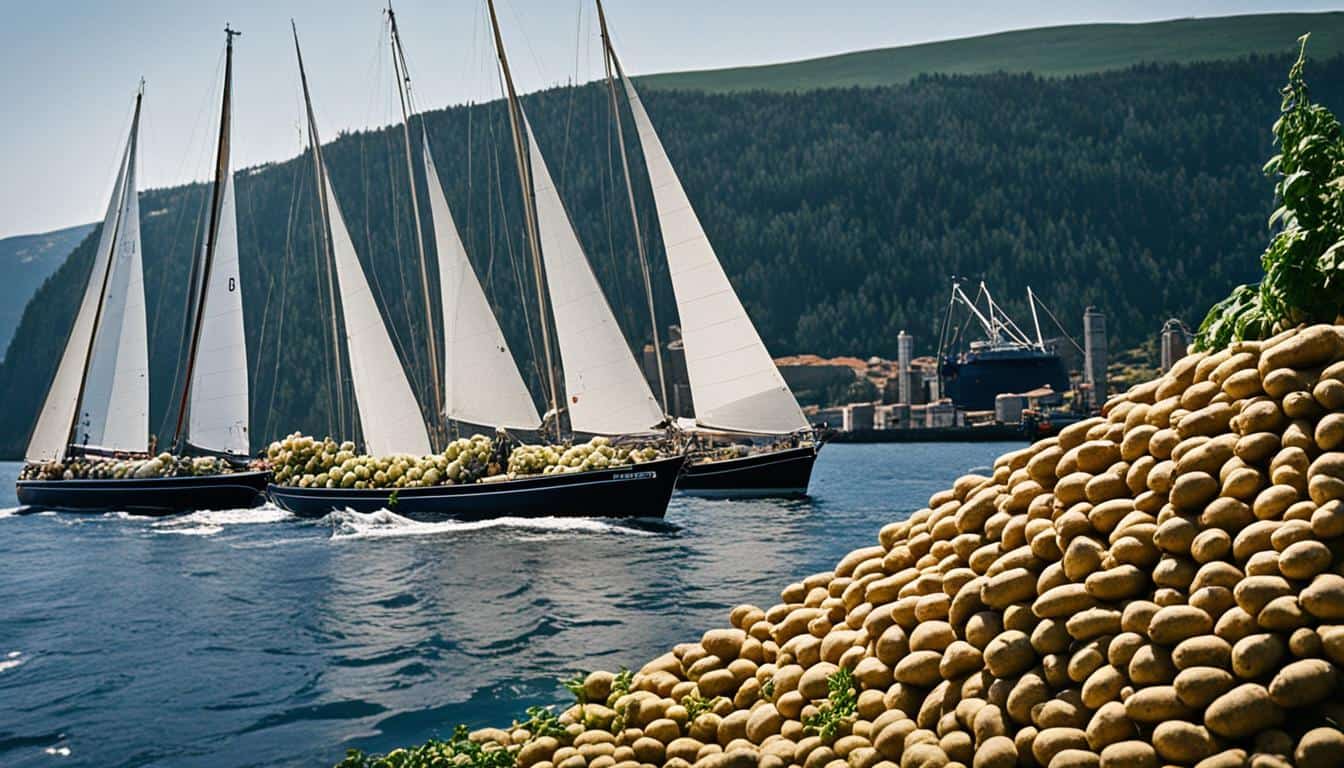
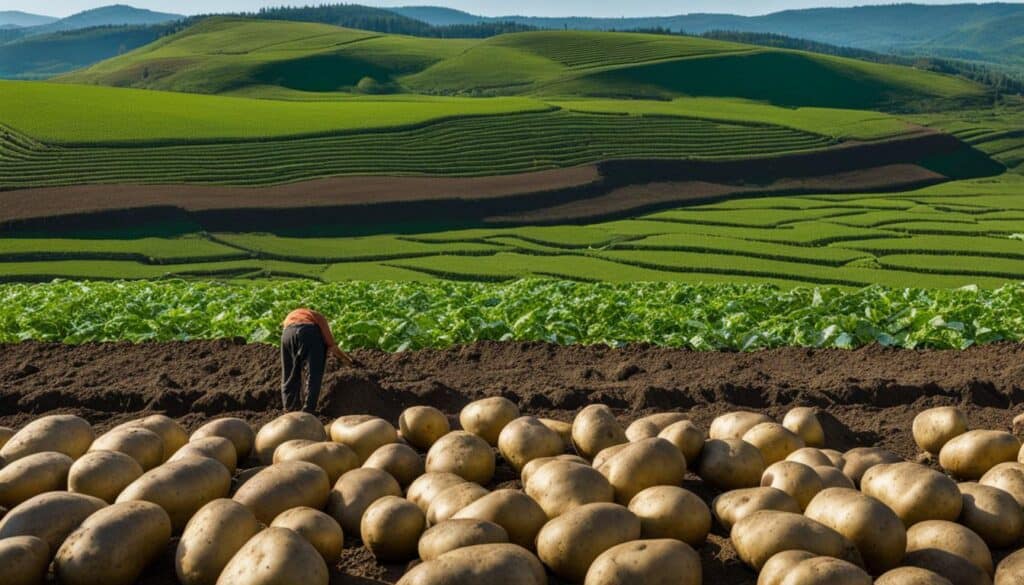
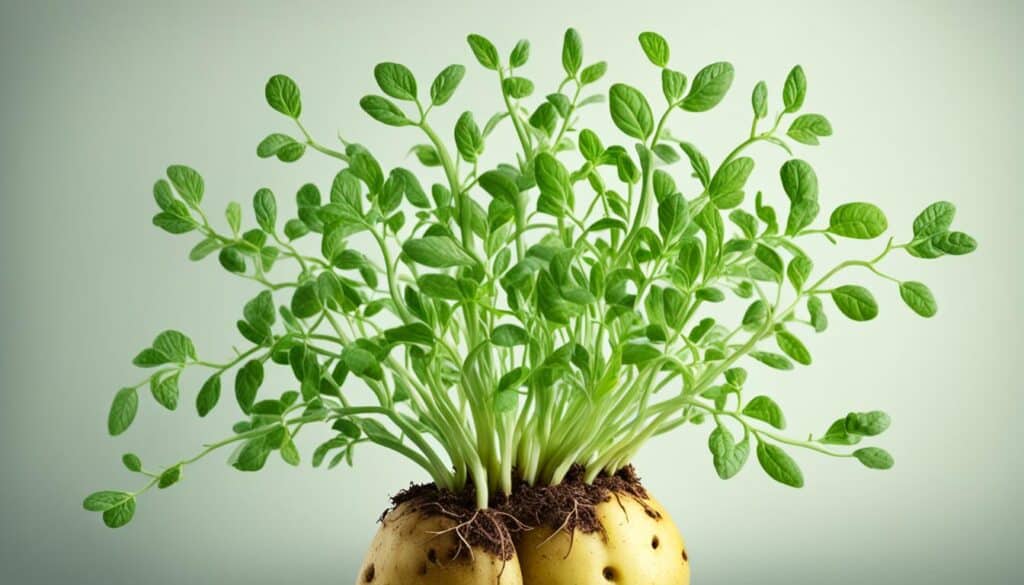
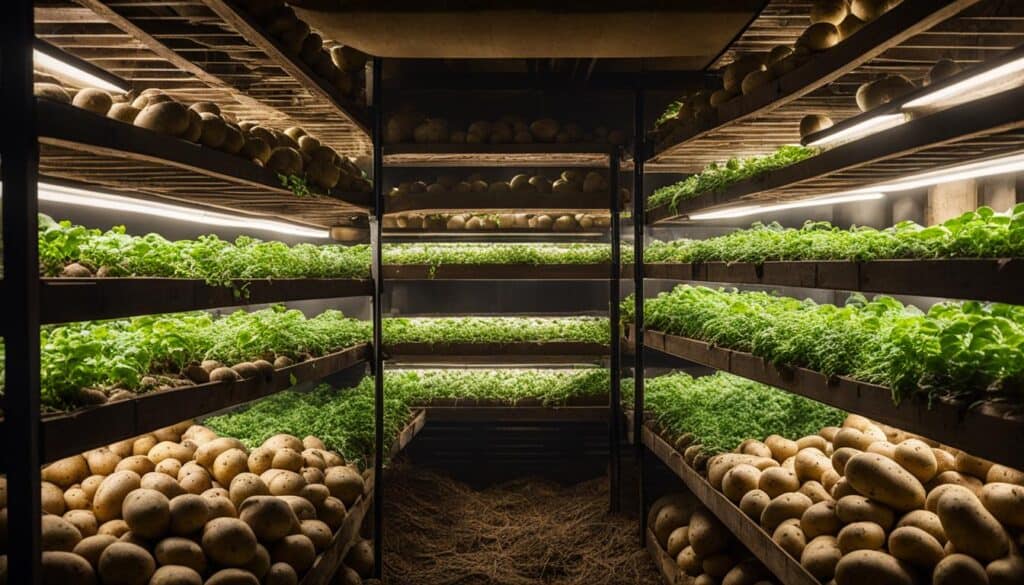
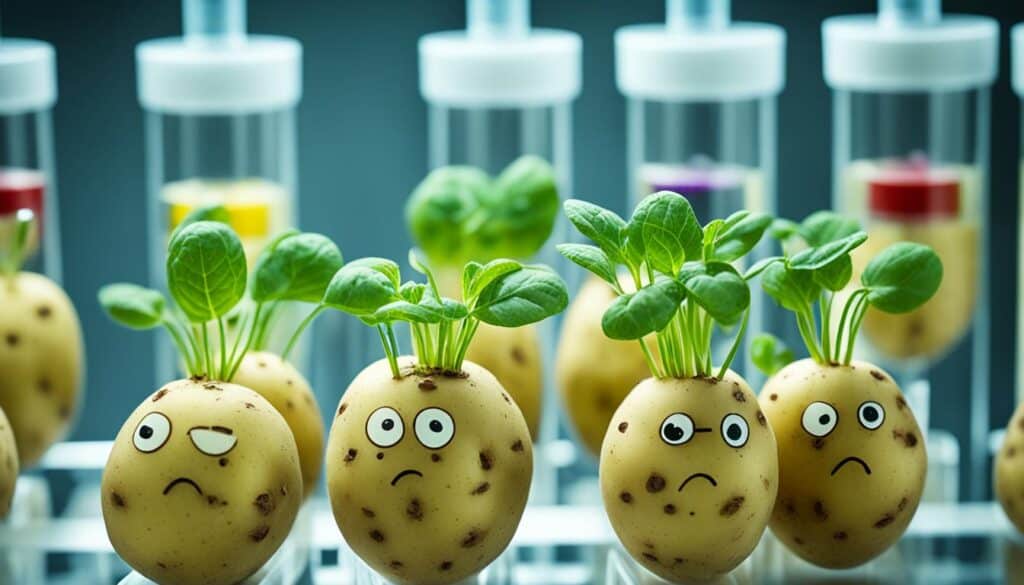




Leave a Reply